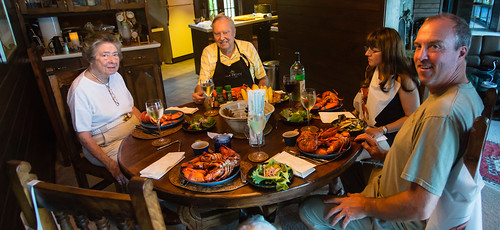The price of lobster, like the price of anything else, is set in a market. But the market price you pay is fundamentally a price determined by the restaurant market, not the market for lobsters. And the issue is a basic one of capacity and competition.
Think back to the Fisherman’s Friend and its excellent location. Stonington is a great place to visit. But it’s also a very small town. There aren’t very many places to eat. And if it’s a certain kind of coastal Maine seafood dinner experience you’re after, there aren’t any other places in town to go. There’s a little reason to fear losing customers to the boil-at-home option as lobster prices fall but no reason to worry about a nearly identical competitor next door poaching your customers. Nor is there a nearly identical competitor next door whose customers you might hope to poach with a discount.

I’ve noticed this frequently in Maine. The lobster price (especially for small, soft shell lobsters—i.e. the most advertised price) is a very competitive market-driven thing. The same boiled lobsters at lobster pounds are too because they’re pretty hard to decouple from the live and kicking versions. But lots of ot
her forms of lobster including lobster rolls and even refrigerated lobster meat tend not to drop accordingly.
It’s also worth noting, per another conversation I had recently, that it’s not immediately obvious why so many restaurants list their lobster as “market price” given that the price of many of their fish and other expensive ingredients presumably vary by season as well. My cynical nature wonders if this isn’t primarily a ploy to just not publish the price and use that lack of transparency to wrest a few extra dollars for a perceived luxury item.

No comments:
Post a Comment